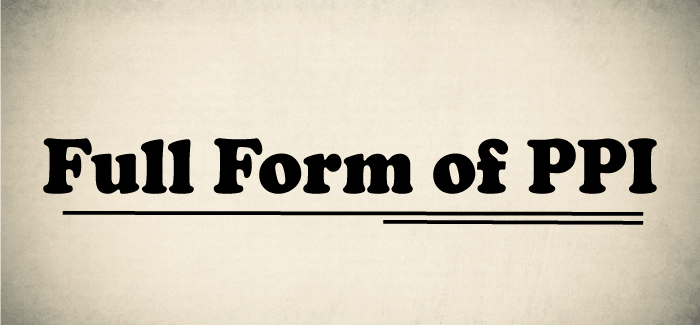What is the full form of PPIPPI: Producer Price IndexPPI stands for Producer Price Index. The pace of change in prices of goods sold as they depart the producer is measured by the producer price index in the manufacturing sector. They do not include any taxes, shipping costs, or trade margins the buyer might incur. PPIs offer measurements of the typical price changes that various commodity producers get. They are frequently seen as early warning signs of changes in economic prices, including those for consumer products and services. 
Manufacturing includes manufacturing finished items like consumer goods and capital gear, semi-processed goods, and other intermediate commodities. Several price indices can gauge an economy's inflation. These include GDP deflators, producer price indices, pricing indices for particular items and services, and consumer price indices (CPI) (PPI). This indicator is offered for both the global and domestic markets and is calculated using an index and an annual growth rate. 3 PPI Classification StructuresThe PPI index uses three main classification structures to calculate the change in prices:
Why Would Someone Use a PPI?Among the applications of the Producer Price Index are:
What is the "Producer Price Index" Predictable for?The Producer Price Index (PPI) studies inflation from a commercial and industrial perspective. This technique assesses pricing changes before consumers purchase products and services. Because of this, many analysts believe it can anticipate inflation before the CPI. Difference between the Producer & Consumer Price IndicesThe CPI and PPI both track inflation. The average selling price that producers get over time for their output is how the Producer Price Index (PPI) assesses inflation from the producers' perspective. The PPI calculates inflation from the consumer's perspective, considering the value of a selection of services and goods consumers have purchased over time. Presentation of Producer Price Index (PPI) NumbersThe BLS creates over 10,000 industry and product pricing indices each month, which are then used to calculate the PPI. They fall into three categories: industry-level categorization, commodity classification, and the first demand-intermediate demand, and are provided with and without seasonal adjustments. i) Industry Level Classification Based on products sold outside the industry, the PPI comprises indices for producer prices obtained in over 500 industry categories. The categories can report industry-level data on production, employment, earnings, and productivity in other releases. ii) Commodity based Classification To classify output based on the characteristics of the good or service, commodity classification disregards the producer's industry. The PPI report includes over 3,800 commodity price indexes for goods or over 900 for services. iii) First Demand-Intermediate Demand (FD-ID) The first demand-intermediate demand (FD-ID) indexes employ the product-specific commodity indexes to gauge producer pricing based on the purchasers' economic backgrounds and whether the supplied items need to be processed further. There are more than 600 FD-ID indexes published in the PPI report. The headline PPI value, which represents the PPI for final demand, is then calculated using the final demand indexes instead of the intermediate demand ones. Some of the most Common Questions AskedWhat exactly does PPI mean? PPI is an abbreviation for the Producer Price Index. What exactly is a PPI? The Producer Price Index, or PPI, is a grouping of about 10,000 indices that tracks changes in discounted rates for producers and is used to compute inflation. What is the purpose of PPI? One application for the PPI is as a gauge of inflation, either at the producer level overall or for specific sectors and goods. What exactly is a PPI sample? The PPI sample contains information from more than 25,000 businesses that provide over 100,000 price quotes each month. Which index is the opposite of the PPI? As opposed to the Producer Price Index, which measures price changes at the producer level, the Consumer Price Index measures changes at the retail level.
Next TopicFull Form
|
 For Videos Join Our Youtube Channel: Join Now
For Videos Join Our Youtube Channel: Join Now
Feedback
- Send your Feedback to [email protected]
Help Others, Please Share










